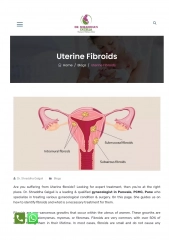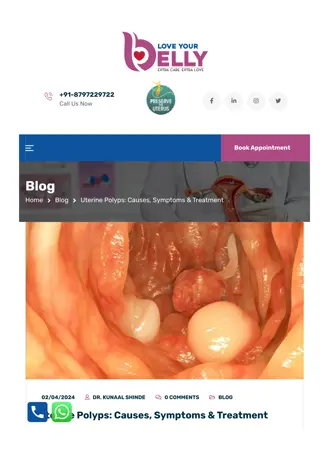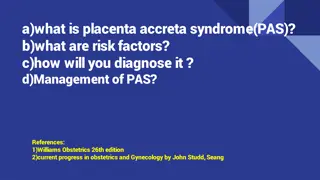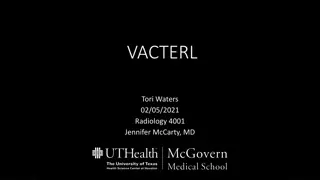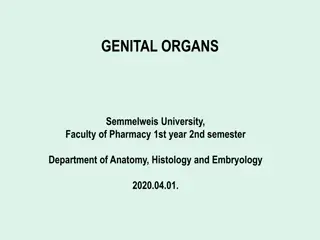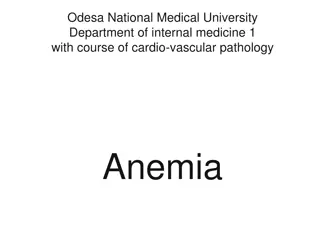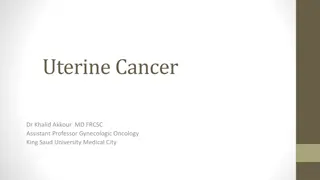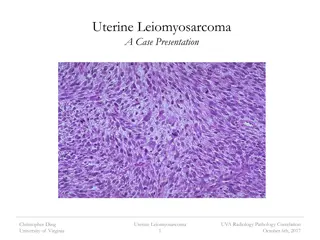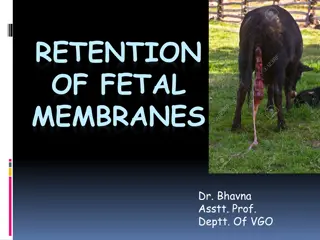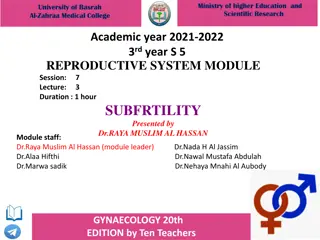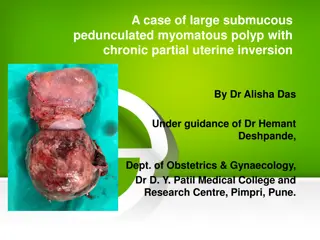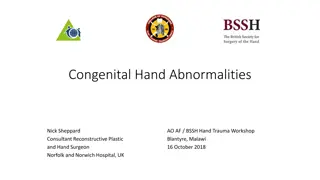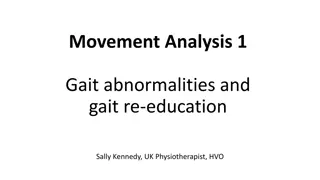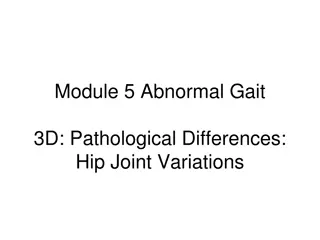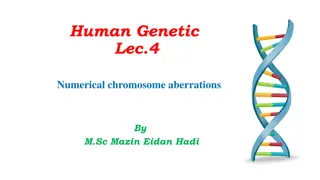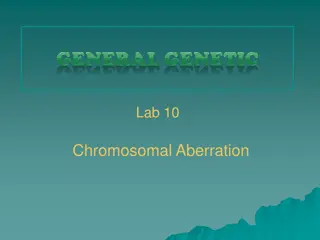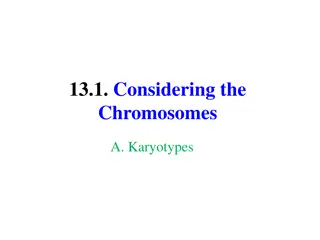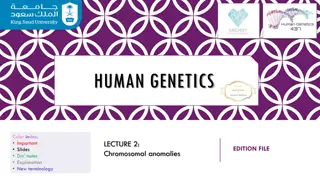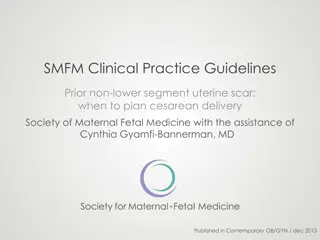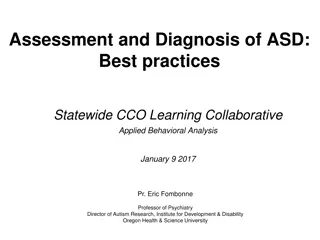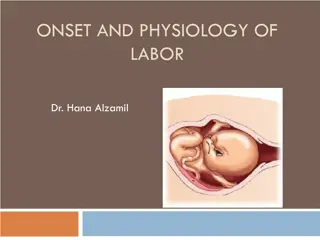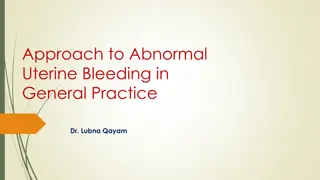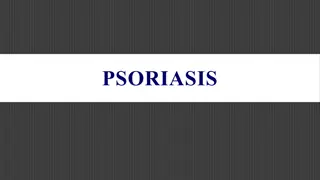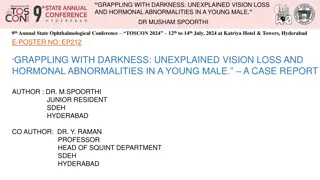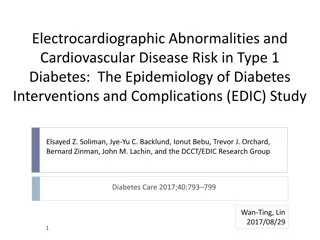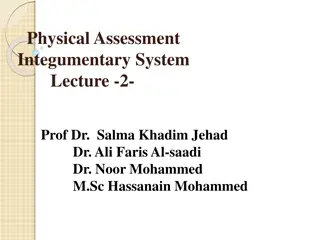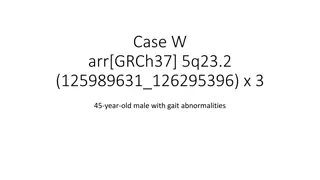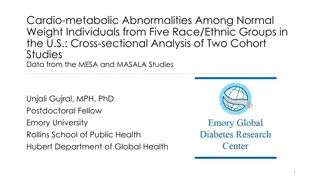Gynecological disorders
Common gynecological disorders including menstrual disorders and abnormal uterine bleeding. Find out about the nursing role in diagnosing and treating these disorders.
3 views • 22 slides
fibroids-and-fertility-what-you-need-to-know-
Worried about fibroids impacting your baby\u2019s dreams? Millions of women face the challenging reality of uterine fibroids. Female factor infertility can occur due to many reasons. It is highly important to regularly observe one\u2019s reproductive health. Many women of young age have issues relat
1 views • 6 slides
Uterine Fibroids-Symptoms Causes and Treatment
Are you suffering from Uterine fibroids? Looking for expert treatment, then you\u2019re at the right place. Dr. Shraddha Galgali is a leading & qualified gynecologist in Punwale, PCMC, Pune who specialize in treating various gynecological condition & surgery. On this page, She guides us on how to id
1 views • 6 slides
Gynaecological Cancers - Dr Manoj Dongare
Gynecologic cancer starts in a woman\u2019s reproductive organs. Five main types of cancer that affect a woman\u2019s reproductive organs are cervical, ovarian, uterine, vaginal, and vulvar. As a group, they are referred to as gynecologic cancer. Each cancer is different and requires special treatme
0 views • 1 slides
Gynecological Considerations for Long-Duration Spaceflight
This study by the National Aeronautics and Space Administration (NASA) discusses the potential effects of microgravity and space radiation on gynecological health during long-duration spaceflight. Topics covered include normal menstruation, fertility, gynecologic pathology, and the impact of hormona
0 views • 28 slides
Uterine Polyps Causes, Symptoms & Treatment
Despite frequently being benign, uterine endometrial polyps can have a serious influence on a woman\u2019s general health and her ability to conceive. These minute tissue developments in the uterine coating can cause a large number of side effects and results. Endometrial polyps, though usually non-
0 views • 8 slides
Fibroids Treatment In Pune - Dr Shraddha Galgali
Are you suffering from uterine fibroids? Looking for expert treatment? Looking For Fibroids Treatment in Pune? You\u2019re at the right place.\nDr. Shraddha Galgali is a leading and qualified gynecologist in Punwale, PCMC, Pune, specializing in treating various gynecological conditions and performin
1 views • 7 slides
Placenta Accreta Syndrome: Definition, Risk Factors, Diagnosis, and Management
Placenta Accreta Syndrome (PAS) is characterized by abnormal placental implantation with firm adherence to the uterine muscle due to the absence of certain layers. Risk factors include previous cesarean section, placenta previa, advanced maternal age, and uterine anomalies. Diagnosis involves ultras
0 views • 16 slides
Case Study: VACTERL Association in a Newborn Female with Imperforate Anus
Newborn female with VACTERL association, imperforate anus, and perianal skin tag identified at birth. Patient transferred for surgical intervention and further workup due to associated abnormalities. Imaging studies show multiple sacral vertebral anomalies. Differential diagnosis includes genetic sy
0 views • 16 slides
Comprehensive Overview of Female Genital Organs and Ovarian Function
Explore in-depth insights into the anatomy and functions of female genital organs, focusing on the ovaries, uterus, uterine tubes, and associated structures. Delve into the maturation of follicles, ovulation process, and hormonal regulation. Gain a clear understanding of the intricate mechanisms inv
1 views • 60 slides
Understanding Red Blood Cell Abnormalities in Anemia: A Detailed Overview
This in-depth article delves into the various types of red blood cell abnormalities seen in anemia, such as anisocytosis, poikilocytosis, spherocytes, ovalocytes, acanthocytes, codocytes, drepanocytes, and stomatocytes. It explains the characteristics of each abnormality, their significance in diffe
0 views • 45 slides
Understanding Uterine Cancer and Postmenopausal Bleeding
Dr. Khalid Akkour, Assistant Professor of Gynecologic Oncology at King Saud University Medical City, provides insights on uterine cancer and postmenopausal bleeding. The structured OSCE discusses important aspects such as taking a focused history, age, ethnicity, past gynecologic and obstetric histo
0 views • 154 slides
Understanding Uterine Leiomyosarcoma: A Case Presentation
A 58-year-old female with a history of fibroids presented with post-menopausal bleeding and was diagnosed with uterine leiomyosarcoma, a rare and aggressive malignancy of uterine smooth muscle cells. The case details the clinical course, diagnosis, and prognosis of this condition, emphasizing the im
0 views • 17 slides
Understanding Karyotypes and Chromosomal Abnormalities
Karyotypes are photographic inventories of an individual's chromosomes, helping determine genetic sex and detect abnormalities. Common chromosomal conditions like Down syndrome, Klinefelter's syndrome, and Turner's syndrome are discussed, along with the impact of abnormal sex chromosomes on characte
0 views • 10 slides
Understanding Retention of Fetal Membranes in Veterinary Obstetrics
Retention of fetal membranes, a common issue during the third stage of labor, has significant consequences for animals, especially cattle. Causes include insufficient expulsive efforts and placental issues. The incidence ranges from 6.8% to 50%, often associated with dystocia and twin births. Factor
0 views • 25 slides
Understanding Cesarean Section and Preterm Labor Risks
Cesarean section (C/S) is a delivery method for various fetal and maternal indications, while preterm labor poses risks like twin pregnancy, uterine abnormalities, and infections. Complications of C-sections and signs of preterm labor are discussed, highlighting the importance of early recognition a
0 views • 9 slides
Understanding Subfertility: Causes, Diagnosis, and Management
Subfertility is defined as the failure to conceive after one year of regular, unprotected intercourse. Causes include ovulatory disorders, tubal factors, uterine factors, male factors, and unexplained factors. Diagnosis involves assessing ovulation, tubal patency, uterine abnormalities, and semen an
0 views • 20 slides
Large Submucous Pedunculated Myomatous Polyp with Chronic Partial Uterine Inversion
A 41-year-old female presented with complaints of bleeding, foul-smelling discharge, abdominal pain, and a mass protruding from the vagina. History revealed menorrhagia, dysmenorrhea, and recent onset symptoms. Physical examination showed no significant abnormalities except for a firm palpable uteru
1 views • 19 slides
Understanding Congenital Hand Abnormalities and Associated Syndromes
Explore congenital hand abnormalities such as macrodactyly, trigger thumb, clasped thumb, preaxial deficiency, and syndromes like Holt-Oram Syndrome and Fanconi Anemia. Learn about assessment, intervention plans, and common treatments provided by experts in reconstructive plastic and hand surgery.
1 views • 26 slides
Portal Vein Imaging Techniques and Anomalies Overview
Portal vein imaging is crucial for evaluating conditions affecting the abdominal part of the gastrointestinal tract. Techniques such as spleno-portography and CT triphasic contrast imaging are used to visualize the portal vein and diagnose anomalies like portal-systemic collaterals and porto-systemi
4 views • 7 slides
Understanding Gait Abnormalities and Re-Education: A Comprehensive Analysis by Sally Kennedy
Sally Kennedy, a UK physiotherapist, explores gait abnormalities common in older individuals and those with neurological conditions. The content delves into the stages of the normal gait cycle, from initial contact to mid-swing, highlighting the importance of identifying and managing common gait pro
0 views • 21 slides
Pathological Differences in Hip Joint Variations: Abnormal Gait Analysis
Understanding pathological gait variations related to hip joint differences is crucial in gait analysis. Excessive sagittal, coronal, and transverse plane motions impact stance and swing phases, leading to deviations in gait patterns. Excess flexion, limited flexion, past retraction, excess adductio
0 views • 13 slides
Understanding Numerical Chromosome Aberrations in Humans
Numerical chromosome aberrations involve the gain or loss of whole chromosomes, impacting the genome size and potentially leading to genetic mutations. Nondisjunction, where chromosomes fail to separate properly during cell division, can result in aneuploidy - the presence of an extra or missing chr
0 views • 18 slides
Understanding Chromosomal Aberrations and Mutations in Genetics
Chromosomal aberrations and mutations are key events that can alter the genetic structure of organisms. They can lead to numerical abnormalities like aneuploidy and structural abnormalities such as ring chromosomes and chromosome fragments. Understanding these variations in chromosomes is crucial in
0 views • 10 slides
Understanding Chromosomal Abnormalities and Syndromes
Human cells have 22 pairs of autosomes and one pair of sex chromosomes, totaling 46. Karyotypes help diagnose chromosomal abnormalities by aligning chromosomes in size order. Nondisjunction during meiosis can lead to abnormal chromosome numbers in gametes. Disorders like Down Syndrome, XYY Syndrome,
0 views • 30 slides
Understanding Chromosomal Anomalies in Human Genetics
This lecture covers essential topics in human genetics, focusing on mitosis, meiosis, and chromosomal abnormalities. Students will learn about the events in mitosis and meiosis, non-disjunction, and classification of chromosomal anomalies, including numerical and structural abnormalities. Detailed e
1 views • 22 slides
Comprehensive Clinical Evaluation of Children with Cardiac Abnormalities
Initial clinical evaluation of a child with possible cardiac abnormalities includes history taking and physical examination. History should cover symptoms related to pulmonary and systemic venous congestion, cyanosis, cyanotic spells, palpitations, chest pain, and more. The general physical examinat
0 views • 65 slides
Cesarean Delivery Timing Guidelines for Women with Prior Uterine Scars
Society for Maternal Fetal Medicine provides cesarean delivery timing recommendations for women with prior uterine scars. For those with a history of classical cesarean, the risk of uterine rupture guides the timing of repeat cesarean. Similarly, women with prior myomectomy should plan delivery betw
0 views • 10 slides
Understanding Autism Spectrum Disorder: Assessment, Diagnosis, and Characteristics
This content delves into the assessment and diagnosis of Autism Spectrum Disorder (ASD) with a focus on early markers, DSM-5 criteria, language/communication abnormalities, social interaction abnormalities, and repetitive behaviors/unusual interests. It provides a comprehensive overview of the key a
0 views • 20 slides
Understanding the Physiology of Labor in Pregnancy
Labor, also known as parturition, is the process of uterine contractions leading to the expulsion of the fetus. Various hormonal changes, including increased estrogen levels, play a crucial role in triggering and regulating labor. The progression from a quiescent uterus to active contractions involv
0 views • 29 slides
Physiology of Labor: Onset and Key Hormonal Changes
Labor, or parturition, involves uterine contractions leading to the fetus's expulsion. Factors triggering labor include hormonal changes like increased estrogen and decreased progesterone, which stimulate uterine muscle activity. Telocytes play a role in spontaneous uterine activity, while oxytocin
0 views • 36 slides
Understanding Second Trimester Miscarriage: Causes and Management Options
Second trimester miscarriage, occurring after 12 weeks of gestation, can be caused by factors such as cervical injury, infections, thrombophilias, uterine abnormalities, and chromosomal issues. Management options include medical, surgical, and expectant approaches, with factors like gestational age
1 views • 16 slides
Comprehensive Guide to Abnormal Uterine Bleeding: Causes, Approach, and Management
Explore the approach to abnormal uterine bleeding in general practice with Dr. Lubna Qayam. Dive into different scenarios of patients presenting with varied symptoms and histories. Learn about the causes of abnormal uterine bleeding in reproductive age and post-menopausal women, including anovulator
0 views • 22 slides
Understanding Psoriasis: Causes, Types, and Symptoms
Psoriasis is a chronic, multifactorial skin condition characterized by papulosquamous eruptions caused by abnormalities in arachidonic acid metabolism and skin cell immunity. It is believed to have a genetic component and results in various types of lesions like chronic plaque, guttate, flexural, an
0 views • 10 slides
Understanding Uterine Displacement: Causes, Symptoms, and Treatment
Uterine displacement refers to the abnormal positioning of the uterus, such as retroversion and retroflexion. This article discusses the classification, etiology, diagnosis, and treatment of uterine displacements, focusing on retroverted uterus during pregnancy. Factors affecting uterine position an
0 views • 12 slides
Unexplained Vision Loss and Hormonal Abnormalities in Young Male - A Case Report
A case report presented at the 9th Annual State Ophthalmological Conference TOSCON 2024 discusses a young male patient grappling with unexplained vision loss and hormonal abnormalities. The patient exhibited symptoms of headache, diminished vision in the left eye, and an unusual head-turning behavio
0 views • 6 slides
Electrocardiographic Abnormalities and Cardiovascular Disease Risk in Type 1 Diabetes
This study examines the association between ECG abnormalities and incident CVD events in patients with type 1 diabetes, focusing on the prognostic significance in a population where CVD develops earlier. Major and minor ECG abnormalities were classified, with cardiovascular events such as myocardial
0 views • 16 slides
Comprehensive Guide to Integumentary System Assessment Techniques
Learn the essential techniques for assessing the integumentary system, including skin, hair, and nails, through inspection and palpation. Understand how to evaluate nail health based on color, shape abnormalities like spoon shape or clubbing, and texture variations. Explore skin assessment criteria,
0 views • 21 slides
Evaluation of Genetic Abnormalities in a 45-Year-Old Male with Gait Abnormalities
A 45-year-old male with gait abnormalities was referred for evaluation, with an unknown inheritance and deceased parents. His father had a history of ataxia and tremor. Using the GAIN scoring metric, the genomic content was assessed, including the presence of protein-coding genes, established TS gen
0 views • 24 slides
Cardio-metabolic Abnormalities Among Normal Weight Individuals: A Cross-sectional Analysis of Race/Ethnicity in the U.S.
Overweight and obesity are known cardio-metabolic risk factors, but this study delves into abnormalities among normal-weight individuals. The research compares data from MESA and MASALA studies, including diverse race/ethnicity groups like White, African American, Hispanic American, Chinese American
1 views • 23 slides


